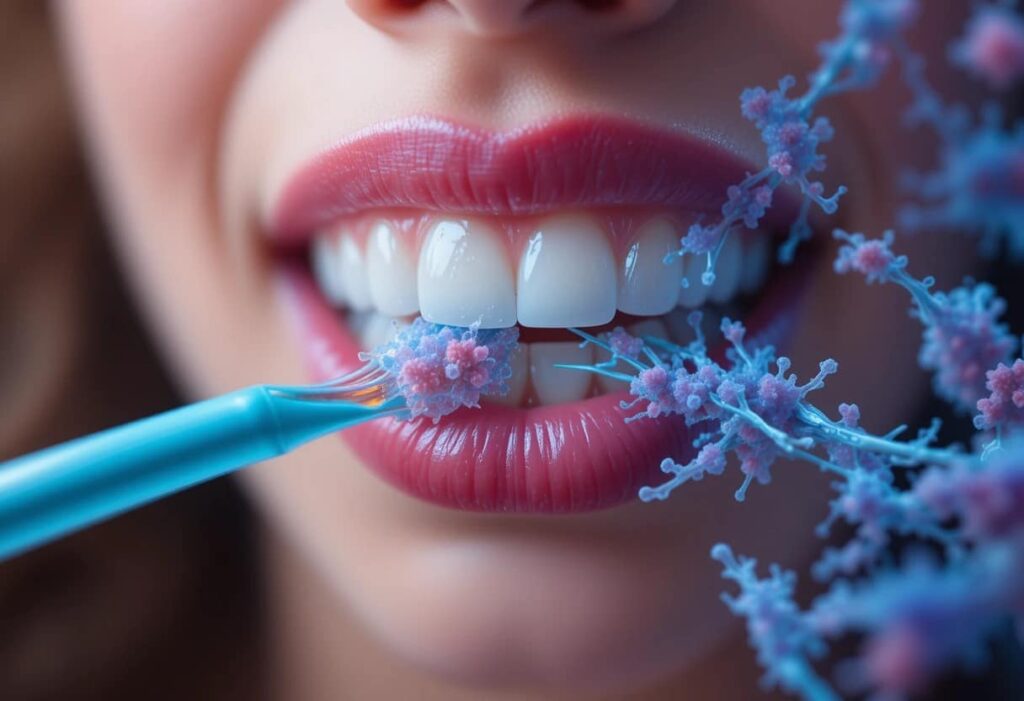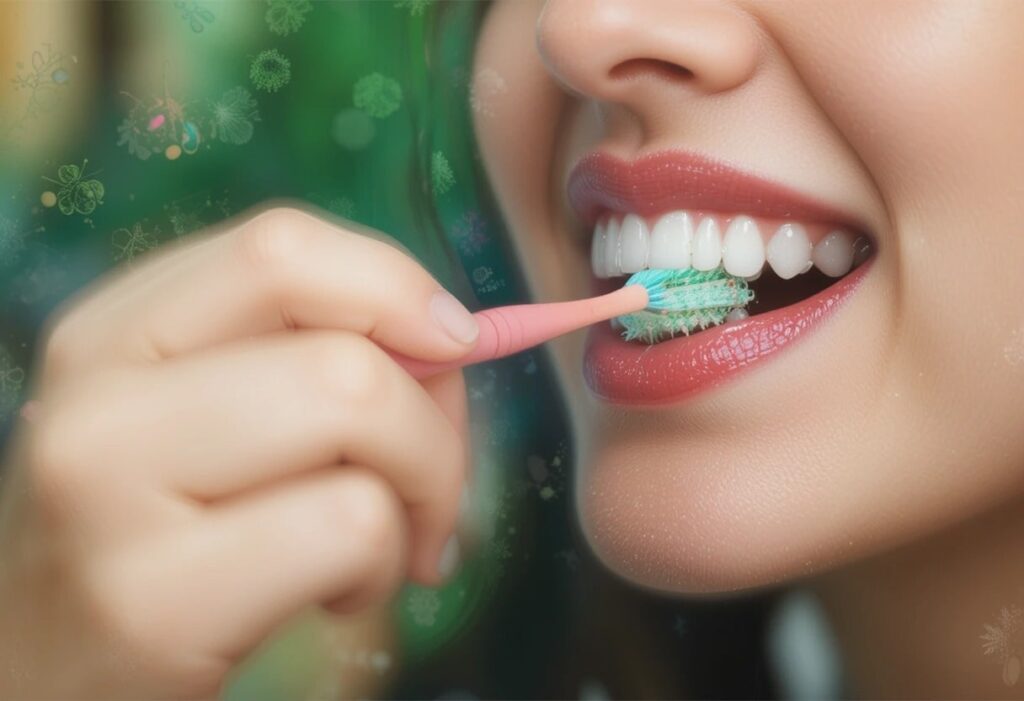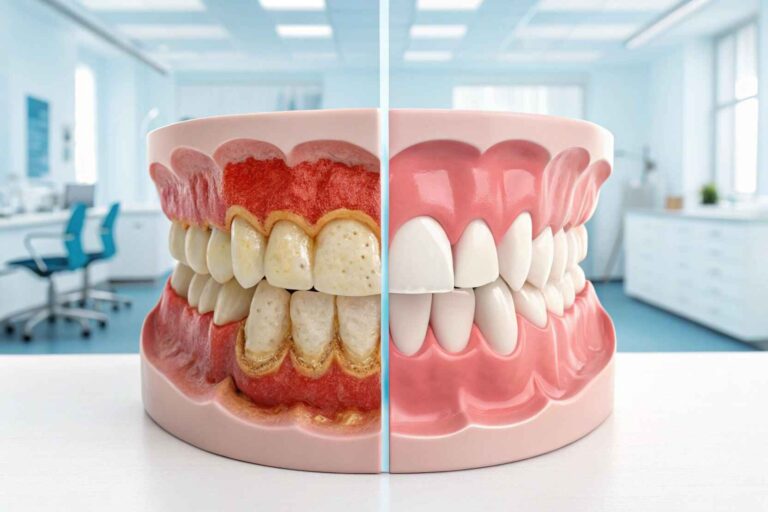Is Gum Disease Transmittable – Protect Your Family With These Tips!
Gum disease, known medically as periodontal disease, is a silent yet widespread condition that affects the soft tissues and bones supporting the teeth. Millions of people globally suffer from gum problems without realizing how significantly it can impact both oral and general health. From swollen gums and bleeding while brushing to bad breath and tooth loss, gum disease is more than just a dental issue—it’s an infection that can spread, worsen over time, and even be passed on to others through close contact.
The idea that gum disease may be transmissible is not commonly discussed, but research shows that the bacteria responsible for this condition can be shared between people, especially those who live closely or share saliva-based contact. While it may not spread in the way colds or viruses do, its microbial nature makes it partially communicable, especially among couples, family members, and even children. Understanding the signs, risk factors, and ways to prevent transmission is essential in maintaining not just your oral health, but also the health of those around you.
What Is Gum Disease?
Gum disease begins when plaque, a sticky film of bacteria, builds up on the teeth. If not removed regularly by brushing and flossing, plaque hardens into tartar, irritating the gums and causing inflammation. This leads to gingivitis, the early stage of gum disease, which is reversible with good oral hygiene. Left untreated, it can develop into periodontitis, a more severe and permanent condition that can damage the tissues and bones that hold teeth in place.
Two Main Stages of Gum Disease:
| Stage | Description | Reversibility |
| Gingivitis | Red, swollen gums; bleeding when brushing | Reversible with care |
| Periodontitis | Bone loss, gum pockets, and tooth mobility | Manageable, not curable |
How Is Gum Disease Transmitted?

While gum disease is not infectious in the traditional sense (like flu or measles), it involves bacteria, and these microbes can be shared between individuals. The bacteria that contribute to periodontal disease reside in saliva, and certain behaviors can transfer them from one person to another.
Common Methods of Transmission:
- Kissing on the lips
- Sharing utensils, straws, or drinks
- Using the same toothbrush
- Pre-chewing food for infants
- Close family living with poor oral hygiene practices
The Role of Oral Microbiome:
Every person has a unique oral microbiome—a complex community of bacteria that helps maintain mouth health. When someone comes into contact with another person’s saliva, their oral flora can be altered. If the incoming bacteria are aggressive strains, they may overpower the existing balance and lead to inflammation or infection, especially if oral hygiene is poor or immunity is low.
What Are the Symptoms of Gum Disease?
Early detection plays a vital role in managing gum disease and preventing its potential spread through harmful oral bacteria. Recognizing the key symptoms can help you seek timely treatment and reduce the risk of worsening oral health.
B. Key Symptoms to Look For:
- Swollen, red, or tender gums: These are often the first noticeable signs of gum irritation or infection. Gums may appear inflamed, feel sensitive when touched, and become increasingly uncomfortable, especially while eating or brushing, indicating the early stages of gingivitis or a bacterial imbalance.
- Bleeding during brushing or flossing: Gums that bleed easily, even during gentle brushing or flossing, suggest inflammation or plaque buildup. While occasional bleeding may seem minor, persistent bleeding can be a sign of gum disease and should not be ignored, as it reflects tissue damage.
- Persistent bad breath (halitosis): Chronic bad breath that doesn’t improve with brushing or mouthwash may be a sign of bacterial infection in the gums. This odor is often caused by the buildup of toxins from harmful bacteria in the mouth and under the gum line.
- Gum recession: Receding gums make teeth appear longer and can expose the tooth roots. This condition results from tissue breakdown and can lead to increased tooth sensitivity, higher risk of decay, and more spaces for bacteria to gather if not treated early.
- Loose or shifting teeth: As gum disease progresses, it can destroy the bone and tissue holding teeth in place. This may cause teeth to become loose, shift in alignment, or develop spaces. Pus between teeth and gums is also a severe indicator of infection.
Who Is Most at Risk?
While everyone is potentially susceptible to gum disease, certain people are more prone due to lifestyle, health conditions, and genetic makeup.
Risk Categories:
| Risk Factor | Description |
| Smoking | Reduces blood flow to the gums, impairing healing |
| Poor oral hygiene | Increases plaque and tartar build-up |
| Diabetes | Alters immune response, raising infection risk |
| Genetics | Some individuals have a natural predisposition |
| Hormonal changes | Especially during pregnancy or menopause |
| Stress | Weakens immune defense, impacting gum health |
People who are in close contact with someone with untreated periodontal disease, especially partners and family members, are at increased risk of acquiring periodontal bacteria, especially if they already fall into any of the above categories.
How Do Dentists Diagnose Gum Disease?
Here are five essential diagnostic methods dentists use to identify and evaluate gum disease, each explained in exactly 55 words:
Gum Probing:
Dentists use a thin, rounded tool called a periodontal probe to gently measure the space between your teeth and gums. Healthy gums have shallow pockets, usually 1–3 millimeters deep. Deeper pockets suggest gum detachment or bone loss, which are key signs of periodontitis. This test helps determine the severity of gum disease.
Bleeding Test:
During a dental exam, your dentist may gently probe your gums to see if they bleed. While minor bleeding can occur occasionally, consistent bleeding is a strong indicator of inflammation, irritation, or early gum disease. Bleeding suggests that plaque or tartar has irritated the gum tissue, leading to infection or breakdown of support structures.
X-Rays:
Dental X-rays allow your dentist to view areas beneath the gums that are not visible during a standard exam. These images help identify bone loss, which is a hallmark of periodontitis. By detecting weakened bone support early, dentists can take steps to prevent further deterioration and preserve the structural integrity of your teeth.
Microbial Testing:
In advanced or recurring gum disease cases, your dentist may collect samples of your saliva or plaque to test for specific bacteria. Lab analysis identifies the harmful microbes responsible for the infection. This allows for a more targeted treatment approach, such as prescribing specific antibiotics to address aggressive bacterial strains effectively and reduce disease progression.
Routine Dental Visits:
Regular dental checkups every six months are crucial for the early detection of gum disease. These visits allow dentists to monitor gum health, remove tartar buildup, and catch early signs of inflammation or infection. Early diagnosis and preventive care reduce the risk of serious gum issues, tooth loss, and bacterial spread to others through contact.
Also read: Is Degenerative Disc Disease A Disability – Find Out If You Qualify For Benefits!
Can Children Get Gum Disease from Adults?
Yes, children can be exposed to harmful oral bacteria from adults, especially those with untreated gum disease. While serious gum disease in children is uncommon, early-onset gingivitis is frequently seen. Transmission often occurs through daily habits and close contact. Below are five key ways bacteria can spread:
- Kissing on the lips: Close physical affection, such as kissing children on the lips, can transfer saliva containing periodontal bacteria from adults to children, increasing the risk of gum inflammation and infection in young mouths.
- Sharing spoons or utensils: When parents share spoons, forks, or other eating tools with children, bacteria from their mouths can easily be passed on, especially if the adult has poor gum health or untreated gingivitis.
- Pre-tasting or blowing on baby food: Tasting a baby’s food or blowing on it to cool it down can introduce oral bacteria through saliva droplets, potentially disrupting a child’s developing oral microbiome and increasing infection risk.
- Using the same pacifier or bottle nipple: Placing a pacifier or bottle nipple in the adult’s mouth before giving it to the child can transfer bacteria directly into the infant’s mouth, contributing to early exposure to harmful microbes.
- Neglecting personal oral hygiene: When parents or caregivers do not maintain proper oral hygiene, the bacteria in their mouths increase. This raises the chances of unintentionally transmitting harmful pathogens to children during everyday interactions.
How Is Gum Disease Managed and Treated?
Treating gum disease involves both professional dental procedures and daily at-home practices. Early treatment helps stop the disease from progressing, preserves oral structures, and reduces the bacterial load that could potentially be passed to others. Below are key treatment methods and essential home care habits explained clearly:
Professional Treatment Options:
- Scaling and Root Planing (Deep Cleaning): This non-surgical procedure removes plaque and tartar buildup below the gum line. It smooths the tooth roots, helping gums reattach and reducing inflammation. It’s often the first step in treating early to moderate periodontitis and preventing further bacterial spread.
- Antibiotics: Dentists may prescribe antibiotics in gel, mouthwash, or pill form to kill bacteria causing the infection. These help reduce swelling, control infection, and support healing, especially when used alongside other dental treatments.
- Laser Therapy: Lasers may be used to disinfect infected gum pockets and encourage gum tissue regeneration. This technique can reduce discomfort and bleeding compared to traditional tools, offering a minimally invasive way to target harmful bacteria.
- Surgery (Flap Surgery or Bone Grafting): In advanced cases, surgery may be needed. Flap surgery lifts the gums for deep cleaning and repositioning, while bone grafts rebuild lost bone caused by periodontitis. These procedures restore support around teeth and help limit further damage.

At-Home Care Essentials:
- Brushing Twice Daily with Fluoride Toothpaste: Regular brushing helps remove plaque and prevent buildup. Using fluoride toothpaste also strengthens enamel and supports gum health.
- Flossing Daily: Flossing removes food particles and plaque between teeth where brushes can’t reach, reducing the risk of gum inflammation and pocket formation.
- Using an Antimicrobial Mouth Rinse: Mouth rinses with antibacterial properties help kill lingering bacteria, freshen breath, and support overall gum healing, especially after professional treatments.
- Avoiding Tobacco Products: Smoking and tobacco use impair gum healing, increase inflammation, and raise the risk of severe periodontal disease. Quitting is vital for treatment success.
- Keeping Regular Dental Appointments: Ongoing checkups and cleanings are critical for monitoring progress, adjusting treatment plans, and preventing relapse or reinfection. Dentists may recommend more frequent visits for patients with a history of gum disease.
How Can You Prevent Gum Disease and Protect Others?
Practicing good daily hygiene and avoiding habits that spread bacteria are key to preventing gum disease and protecting others, especially within families. Here are five essential preventive tips, each in exactly 55 words:
Replace Your Toothbrush Regularly:
Change your toothbrush every 3–4 months or sooner if the bristles are frayed. Worn brushes clean less effectively and can harbor bacteria. A fresh toothbrush helps remove plaque efficiently, supports healthy gums, and reduces the chance of reinfection or spreading harmful oral bacteria to others through shared storage spaces or contact.
Get Professional Dental Cleanings Twice a Year:
Seeing your dentist every six months allows for plaque and tartar removal from areas you can’t reach at home. These cleanings prevent buildup that leads to gum disease. Regular checkups also help spot early signs of infection, reducing the risk of developing severe periodontitis or unintentionally transmitting bacteria to loved ones.
Keep Dental Tools Personal—No Sharing:
Never share your toothbrush, floss, or dental picks with anyone, even family members. These tools collect saliva and bacteria that can easily spread between users. Keeping oral hygiene items personal is essential to prevent cross-contamination and protect others from the harmful bacteria that contribute to gum inflammation and periodontal disease.
Brush Your Tongue Daily:
The tongue harbors millions of bacteria that contribute to gum disease and bad breath. Use a tongue scraper or gently brush your tongue daily to reduce bacteria levels in your mouth. This simple step enhances overall oral hygiene and helps reduce the risk of bacterial transmission through kissing or shared utensils.
Avoid Kissing or Sharing Utensils if You Have Gum Disease:
When gum disease is active, your saliva contains high levels of harmful bacteria. Avoid kissing on the lips or sharing utensils, cups, or straws during this time. These activities can pass bacteria to others, especially children or partners, putting their gum health at risk, especially if their immunity is low.
Also read: Arranie Healthsciencesforum – Connect, Learn, Succeed!
What Factors Contribute to Transmission vs. Gum Inflammation?
| Factor | Role in Transmission | Role in Worsening Gum Disease |
| Saliva exchange | Yes | Possibly |
| Smoking | No | Yes |
| Poor brushing/flossing | No | Yes |
| Genetics | No | Yes |
| Sharing utensils/toothbrush | Yes | Possibly |
| Diabetes | No | Yes |
What Should You Know About Living with Gum Disease?

Living with gum disease requires consistent care, lifestyle adjustments, and regular dental monitoring. While the condition can’t always be reversed, it can be controlled with proper maintenance. Below are five essential practices to help manage gum disease and reduce the risk of spreading bacteria to others:
- Inform Your Dentist of Any New: Regular communication with your dentist is vital. Report any new signs like gum bleeding, pain, or loose teeth. Early intervention can prevent worsening of the disease and help maintain long-term oral health, reducing the likelihood of further damage or bacterial transmission.
- Monitor the Oral Health of Family Members: If you have gum disease, stay alert to symptoms in your partner or children, as bacteria can be transferred through close contact. Encourage their routine dental checkups and good oral hygiene habits to protect them and break the cycle of bacterial exchange in the household.
- Address Flare-Ups Quickly: Flare-ups such as swelling, redness, or bleeding may signal active infection. Treating these episodes early with professional care and improved home hygiene can stop the condition from advancing or spreading, helping to preserve both your gum health and that of those around you.
- Avoid Saliva-Sharing Behaviors: During active gum disease, avoid kissing on the lips or sharing toothbrushes, utensils, or drinks. These actions can transfer harmful bacteria to others, especially young children or partners. Caution with saliva contact reduces the risk of spreading periodontal pathogens unintentionally.
- Promote Oral Health Education at Home: Help your household understand how gum disease develops and spreads. Teach children proper brushing and flossing techniques, and model good oral hygiene yourself. This awareness can lead to collective improvements in dental habits and reduce bacterial exposure within the family.
FAQs:
1. Can you catch gum disease from someone else?
You can’t “catch” gum disease like the flu, but the bacteria that cause it can be passed from person to person through saliva. If someone with gum disease shares utensils, kisses you, or transfers saliva in any way, they may expose you to harmful oral bacteria, especially if your oral hygiene is poor.
2. Is it safe to kiss someone who has gum disease?
Kissing someone with active gum disease increases the chance of transferring periodontal bacteria. If your immune system is compromised or your oral hygiene is not ideal, this could contribute to gum irritation or infection. It’s best to avoid deep kissing until the infection is managed or treated.
3. Can I get gum disease from sharing utensils or drinks?
Yes, sharing utensils, cups, straws, or even toothbrushes can allow bacteria from an infected person’s saliva to enter your mouth. These bacteria can colonize your gums and, over time, increase your risk of developing gingivitis or periodontitis, especially if your oral defenses are weakened.
4. Can gum disease be passed from parent to child?
Parents can unintentionally transmit gum disease-causing bacteria to their children through common habits like kissing on the lips, sharing spoons, or cleaning pacifiers with their mouth. Young children are especially vulnerable since their oral microbiome is still developing, and early exposure can lead to future gum problems.
5. If my partner has gum disease, should I be concerned?
Yes, it’s wise to be cautious. Living with someone who has untreated gum disease increases your exposure to harmful bacteria. While you may not get the disease immediately, repeated contact can raise your risk. Both partners should practice excellent oral hygiene and seek treatment if gum issues are present.
Final Thoughts:
Gum disease may not be as contagious as a cold, but its bacterial origin means it can spread through saliva-based interactions. Whether it’s kissing your partner or sharing a spoon with your child, these everyday moments could pass along harmful bacteria if you or your loved ones have untreated periodontal disease.
Maintaining oral hygiene is not just a personal responsibility—it’s also a form of care for those close to you. From brushing and flossing to regular dental visits, every step you take helps control your own gum health and protect others from exposure. With awareness, education, and prevention, gum disease can be both treated and its transmission minimized.
Related post:






